
UPDATE: October 2020: In December 2015 I posted about this gull on Facebook (I am not sure which group) about this gull; here is the response from Euro guller Lou Bertalan:
"Hi Martin, apart from the head shape in the first pic I see nothing odd for Euro herring. A slighly more hanging belly would have been nice but both head and belly shape of course depend on mood and behaviour. I wonder how much better an argentatus should look to get accepted in NA [=North America]?"
UPDATE: December 2015: I have replaced the images with larger versions, and included two more. I have added at the bottom some discussion of this bird, plus links to Euro-HERGs that to varying degrees share features with this individual.
This gull was photographed on December 28, 2006 in the Coastal Plain near Houston and Galveston, Texas. This gull is a Herring Gull type:
The chest pattern first drew my attention, as this thick, blurry streaking is at best extremely rare on the first-cycle American Herring Gulls (AMHE) I see in Texas - and then only later in the season (Feb/Mar) in my experience (when wear/replacement can affect the appearance). A quick glance at the visible part of the tail suggested an Old World tail pattern, which was confirmed when the bird took flight. Also note the tertials have complete jagged white fringes creating a dark "holly-leaf" center, and the fairly extensive white bars in the greater coverts. The extensive white barring in the greater coverts is normally found on a handful of Texas birds each winter (in years when I have access to good numbers of large gulls), but today I saw an unusually high number of such birds - at least twenty individuals (out of less than 400 large gulls), some of which also had small amounts of white barring in the base of the tail, and/or complete white fringes to the tertials (but these fringes would be even-width - not notched - and usually there were pale subterminal markings to each tertial). Typically, such "frostier" birds have an obvious pale basal 3/4 to the bill and often have the primaries not dark enough for a pure AMHE. I think that the bird below would not attract much attention in a European gull flock - but I'd appreciate feedback on this:
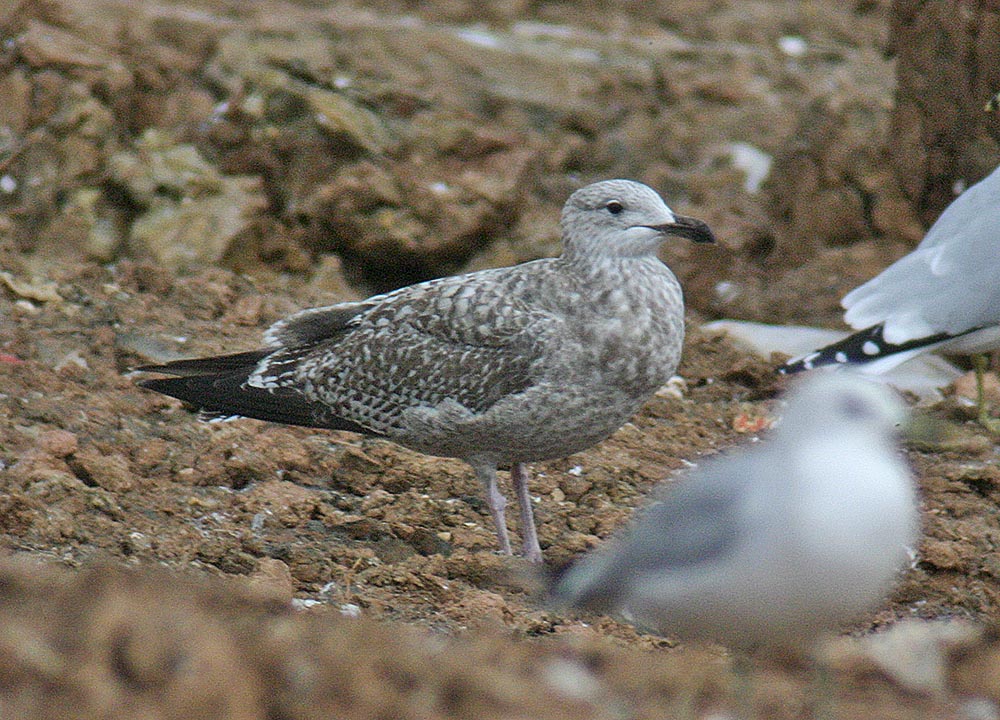
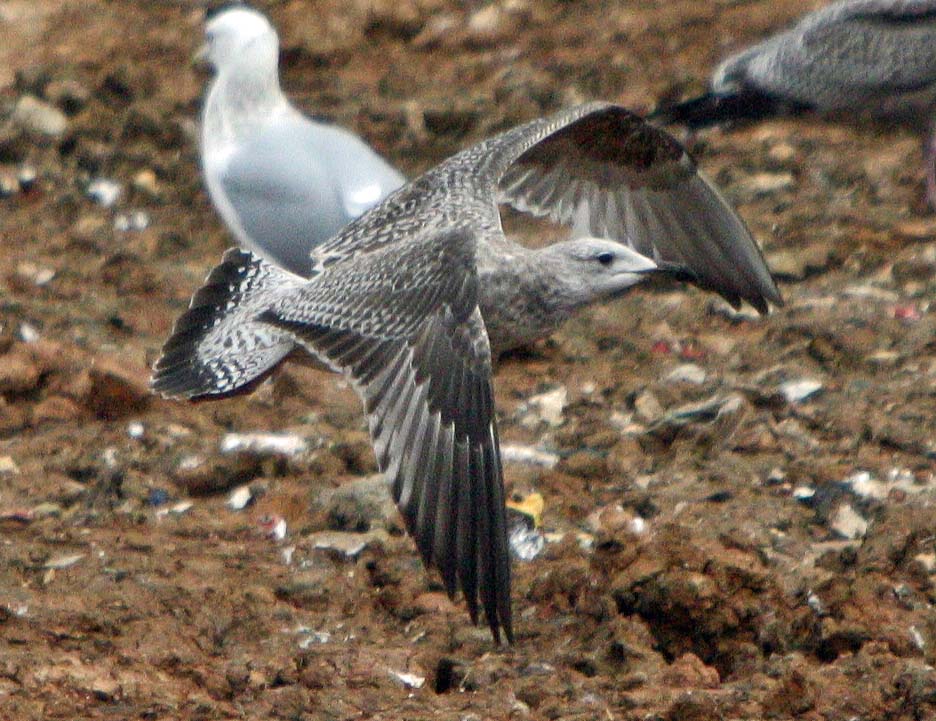
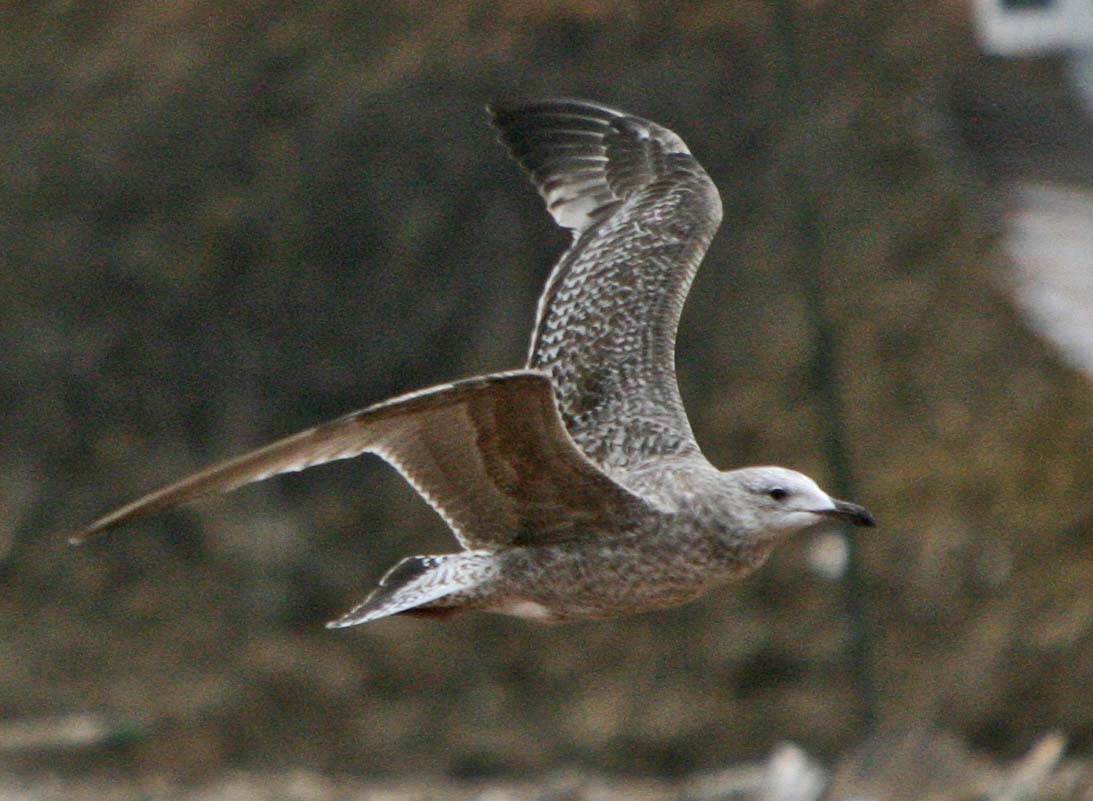
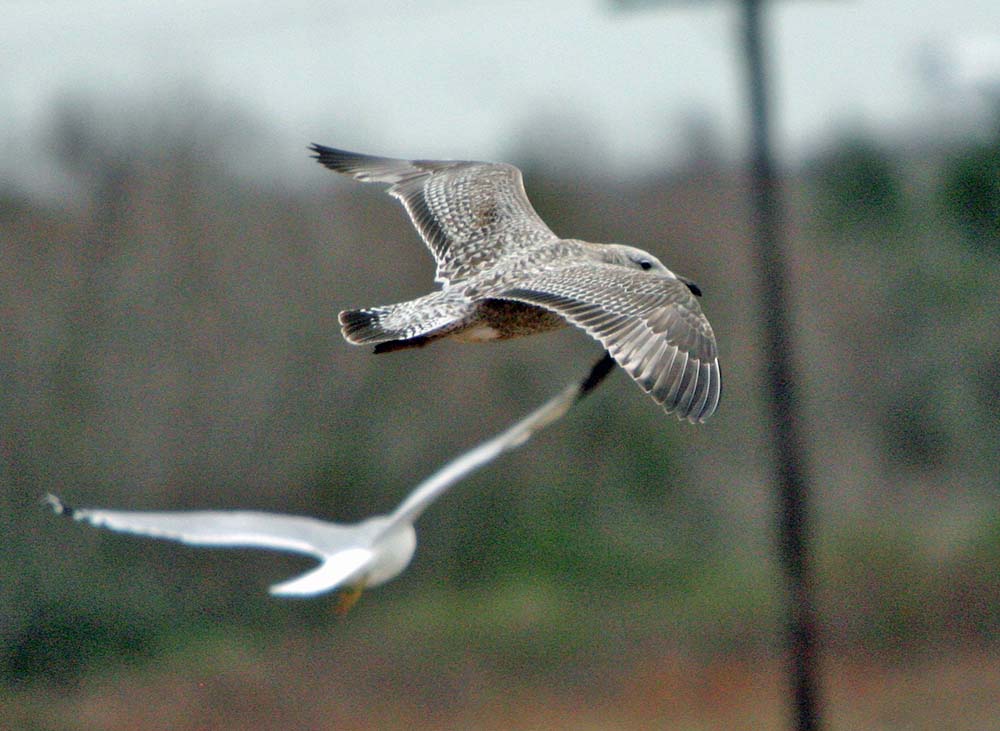
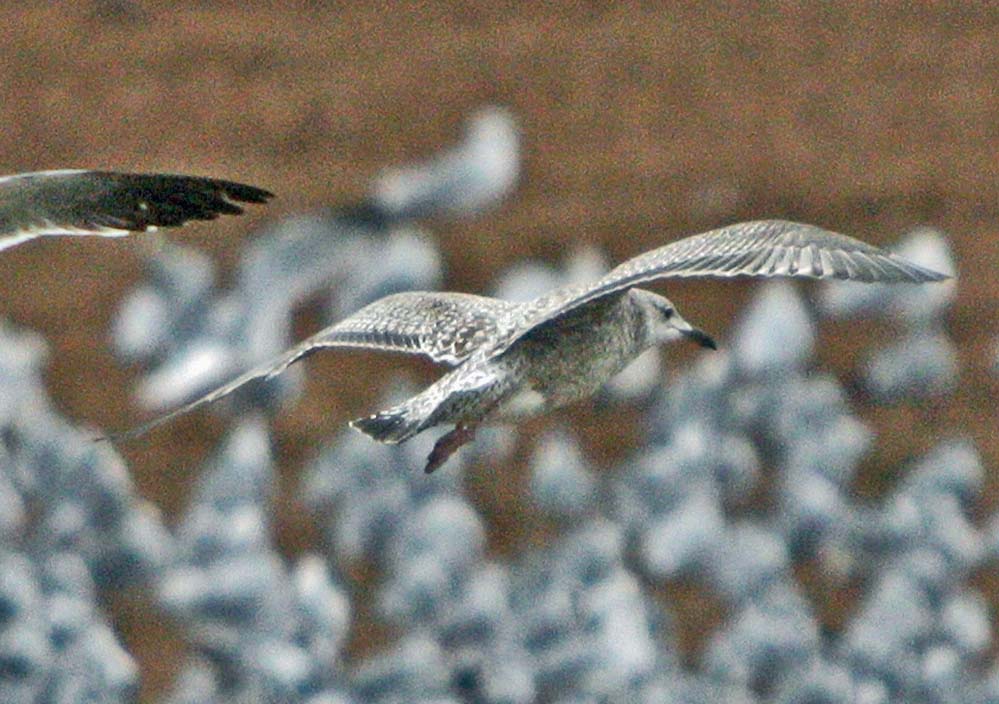
Note the following combination of features:
A)
Underparts - chest/belly: chest with thick somwhat blurry longitudinal marks, many of which are clearly separated from their neighbours; breast/belly similar but with smaller marks, many with clear separation from neigbouring marks.
B) Underparts - flanks: mostly a series of discrete thin dusky chevrons, denser closest to the wing base and on lowermost flanks (extending slightly into lowermost belly, above vent).
C) Underparts: vent/utcs: only partly visible, but what can be seen indicates an area of unmarked white on the vent, plus utcs with contrasting, cleanly demarcated dark transverse bars or shallow chevrons where the intervening white gaps are larger than the chevrons.
D) Tertials: blackish, edged cleanly in white, with a broad tip and narrow but sharply-delineated "saw-tooth" white edges extending back all the way to the visible base of each tertial.
E) Tail from above: plain blackish tail band on outer one-third of tail (but with narrow white tips to the feathers); basal two-thirds largely white-based with two narrow blackish bands next to the black outer tail band and separated by white bands of c. equal width, then lessening amounts of dark squiggles going back towards base; a small area at the base of R6 and R5 unmarked white.
F) Bill: effectively all-dark, but basal 3/4s very slightly paler than blackish distal 1/4.
G) Greater coverts: three white bands separated by two black bands (with sharp demarcation creating a "piano-key" effect) on the inner half of the coverts, with the two distal white bands continuing - with diminishing thickness - outwards to all but the most-distal two feathers.
H) Median coverts: two white bands separated by two black bands (creating a "piano-key" effect - but with less white compared to the gcs) on the inner half of the coverts, becoming darker (= less white) on the outer feathers.
I)
Uppertail coverts and rump: rump white with somewhat dense narrow longitudinal dark triangles (more dark than white); utcs white with bands of separated transverse thick spots such that overall there is slightly more white than dark.
J) Hindneck: barely any darker than adjacent mantle, and consisting of broad blurry streaks and splotches (rather than a smooth dark "shawl") - with these markings extending slightly onto sides of neck.
K) Inner primaries: each with dusky outer web and obviously paler inner web (grayish); P2 - P4 each with a lozenge-shaped pale mark in the darker outer web, subterminally; dark tip largely confined to outer web only.
L ) Scapulars: all are 2nd-gen, with very pale base, and a thin dark shaft line plus dark subterminal narrow transverse diamond shape - thin on upper feathers, becoming thicker on lower feathers, with lowest feathers being dark-centered with a deep "holly-leaf" pattern.
For comparison, here are links to images of argentatus/argenteus that variously share some of the above features:
http://www.gull-research.org/hg/hg2cy/ffapfebr.html
http://www.gull-research.org/hg/hg2cy/l906046feb.html
http://www.gull-research.org/hg/hg2cy/6ltp.html
http://www.gull-research.org/hg/hg1cy/gdar.html
http://www.gull-research.org/hg/hg1cy/6176773.html
http://www.gull-research.org/hg/hg1cy/1cynov21.html
http://www.gull-research.org/hg/hg2cy/hl75.html
http://www.gull-research.org/hg/hg1cy/1cynov33.html
http://www.gull-research.org/hg/hg2cy/2cyjan21.html
http://www.gull-research.org/hg/hg2cy/ataafeb.htm
http://www.gull-research.org/hg/hg2cy/jx0sfeb.htm
http://www.gull-research.org/hg/hg2cy/2cyfeb20.html
http://www.gull-research.org/hg/hg1cy/h46n.html
In this page addressing the ID of smithsonianus, look at the undertail coverts of the very first bird, and the lower-leftmost bird in the six-image comparison further down:
http://gull-research.org/smithsonianus/1cysept.html
- and to see just how dark argentatus can be, take a look at the last two birds in the main section of this page!:
http://gull-research.org/smithsonianus/1cyaugust.html